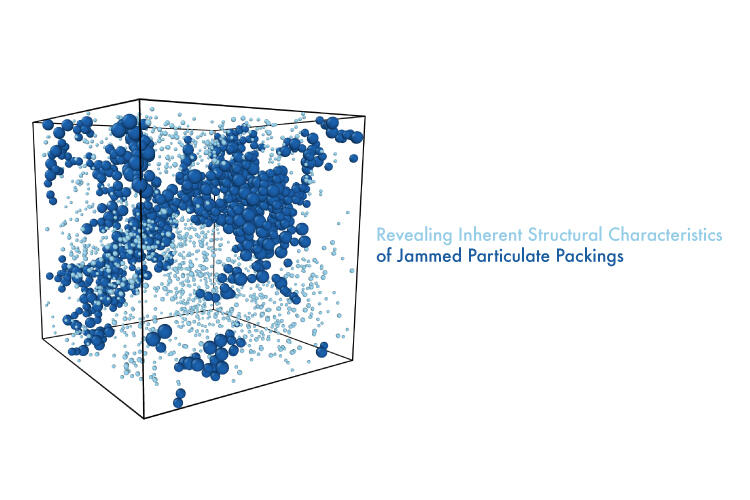A team led by The University of Tokyo developed a new method for understanding the structure organization of disordered collections of soft discs or spheres by a new approach putting a focus on local mechanical properties, fundamentally different from previous approaches to ordered crystals and disordered amorphous solids. In particular, the researchers focused packings resulted from the phenomenon of "jamming," in which a free-flowing substance suddenly clogs as the density increases. The work may help with the design of more efficient industrial materials that are less likely to breakdown under external load.
Imagine you are sitting on the beach playing with the sand piles. But when you try to decorate the castle that you have just built, you are surprised to find that only a very small operation leads to its collapse. In this case, you've just discovered the "marginal stability" of amorphous solids, due to which the system loses its stability unexpectedly. While amorphous solids are ubiquitous in nature and have wide industrial applications, it can be a serious issue for our safety if they fall apart out of control. The structural organization of amorphous solids, which leads to marginal stability, is quite complex and still not completely understood. In fact, most scientists intend to understand amorphous solids using the established models of ordered crystals, but consensus has never been reached.
"Despite intensive study over decades, the unified description of amorphous solids has yet to be firmly established," says first author Dr. Hua Tong.
For the current project, the researchers used computer simulations of soft discs or spheres that can flow at low densities, but become jammed when packed tightly enough. Their key insight was to shift the focus from geometry to the mechanical or vibrational aspect of amorphous solids. The team introduced a new order parameter they call "vibrability," which controls how much the atoms vibrate when heated infinitesimally from zero temperature. Unklike phonons, that are collective vibrations in crystals, the vibrability in an amorphous solid depends on the local environment, and varies from place to place throughout the sample. The researchers showed that locations of high vibrability correspond to disordered "soft spots" that are important for determining where the system may fail under perturbations.
Amorphous solids can be found in a wide variety of forms, yet they all seem to share important features when examined. "An important observation of amorphous solid or jammed packings is that, while they have diverse geometrical structures, they exhibit fairly universal vibrational characteristics" says senior author Prof. Hajime Tanaka. "The discoveries from computer simulations are therefore of fundamental importance for both theoretical and application purposes."
Journal article
Hua Tong, Hao Hu, Peng Tan, Ning Xu and Hajime Tanaka. "Revealing inherent structural characteristics of jammed particulate packings," Physical Review Letters.
DOI: 10.1103/PhysRevLett.122.215502
Research Contact
Hajime Tanaka, Professor
Tel: +81-3-5452-6125 Fax: +81-3-5452-6126
URL:http://tanakalab.iis.u-tokyo.ac.jp/

